 Although only active for around six years, this Shanghai based noise project already has a sprawling discography that rivals many of the long-standing artists that inspired them, with a multitude of limited cassette and CD-R releases. However, I think this may constitute the band’s first solo, mass produced outing. And with this opportunity, the band does exactly as they should: a 73 minute single track of grating, painful dynamic noise.
Although only active for around six years, this Shanghai based noise project already has a sprawling discography that rivals many of the long-standing artists that inspired them, with a multitude of limited cassette and CD-R releases. However, I think this may constitute the band’s first solo, mass produced outing. And with this opportunity, the band does exactly as they should: a 73 minute single track of grating, painful dynamic noise.
Two new shows just for you. We have squeezed out two extended release episodes for this weekend to get you through this week. They contain mostly new songs but there's also new issues from the vaults. The first show features music from Rider/Horse, Mint Field, Robert Aiki Aubrey Lowe, Anastasia Coope, ISAN, Stone Music, La Securite, Bark Psychosis, Jon Rose, Master Wilburn Burchette, Umberto, Wand, Tim Koh, Sun An, and Memory Drawings. The second episode has music by Laibach, Melt-Banana, Chuck Johnson, X, K. Yoshimatsu, Dorothy Carter, Pavel Milyakov, Violence Gratuite, Mark Templeton, Dummy, Endon, body / negative, Midwife, Alberto Boccardi, Divine. Cow in Maui from Veronika in Vienna. Get involved: subscribe, review, rate, share with your friends, send images! |



 While often pigeonholed as a "shoegaze" band, the duo of Lovesliescrushing is something entirely different. Ostensibly doing similar things: Scott Cortez's heavily treated and layered guitar noise and abstracted, mostly unintelligible female vocals from Melissa Arpin-Duimstra, LLC took these and pushed them to the furthest reaches, making little to no concessions for traditional musical style or structure. Here, a selection of pieces between 1990 and 2000 are presented, some for the first time, reworked and shaped into even more abstract forms of glorious noise.
While often pigeonholed as a "shoegaze" band, the duo of Lovesliescrushing is something entirely different. Ostensibly doing similar things: Scott Cortez's heavily treated and layered guitar noise and abstracted, mostly unintelligible female vocals from Melissa Arpin-Duimstra, LLC took these and pushed them to the furthest reaches, making little to no concessions for traditional musical style or structure. Here, a selection of pieces between 1990 and 2000 are presented, some for the first time, reworked and shaped into even more abstract forms of glorious noise.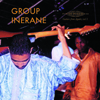 It has only been three years since Sublime Frequencies released the inaugural entry in their Guitars From Agadez series, but so much has happened since then that it is a near miracle that Group Inerane even managed another album. The biggest event: second guitarist Adi Mohamed was killed in the uprisings that followed the coup d’état that ousted Niger’s president. Thankfully, frontman Bibi Ahmed narrowly avoided the same fate and recruited Taureg guitar legend Koudede to fill the void. Unsurprisingly, the new Group Inerane are a darker and noticeably different band.
It has only been three years since Sublime Frequencies released the inaugural entry in their Guitars From Agadez series, but so much has happened since then that it is a near miracle that Group Inerane even managed another album. The biggest event: second guitarist Adi Mohamed was killed in the uprisings that followed the coup d’état that ousted Niger’s president. Thankfully, frontman Bibi Ahmed narrowly avoided the same fate and recruited Taureg guitar legend Koudede to fill the void. Unsurprisingly, the new Group Inerane are a darker and noticeably different band.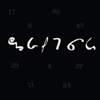 I have always had a love/hate relationship with Edward Ka-Spel's work–he has written some of my all-time favorite songs (Tear Garden's "Romulus & Venus," for example), but he's also recorded an avalanche of stuff that I was not so enthusiastic about. Consequently, I became an increasingly casual LPD fan over the years and haven't heard their last few albums at all. That being the case, I was totally unprepared for how excellent this album is–I can't think of another band in history that has managed to write some of their best songs 30 years into their career. The Dots' best days are definitely not behind them.
I have always had a love/hate relationship with Edward Ka-Spel's work‚Äìhe has written some of my all-time favorite songs (Tear Garden's "Romulus & Venus," for example), but he's also recorded an avalanche of stuff that I was not so enthusiastic about. Consequently, I became an increasingly casual LPD fan over the years and haven't heard their last few albums at all. That being the case, I was totally unprepared for how excellent this album is‚ÄìI can't think of another band in history that has managed to write some of their best songs 30 years into their career. The Dots' best days are definitely not behind them. Brian (Lustmord) Williams' long-out-of-print 1994 ode to the vastness of space has been remastered and reissued. The record may sound better now than it did 15 years ago, but I’m not sure that all of it has stood the test of time.
Brian (Lustmord) Williams' long-out-of-print 1994 ode to the vastness of space has been remastered and reissued. The record may sound better now than it did 15 years ago, but I’m not sure that all of it has stood the test of time.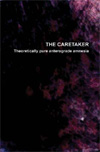 The Caretaker is here to take listeners on a trip deep into the foggy subconscious mind where perception, memory, and dream all collapse into a syrupy void. If this six disc set isn't enough murky drone for a lifetime, I don't know what is.
The Caretaker is here to take listeners on a trip deep into the foggy subconscious mind where perception, memory, and dream all collapse into a syrupy void. If this six disc set isn't enough murky drone for a lifetime, I don't know what is. The full 33 minutes of Once in a Full Moon stands as Black Sun Productions finest musical moment to date. This is an ambitious piece of moon music that covers the territory between lunacy, ambition and grace.
The full 33 minutes of Once in a Full Moon stands as Black Sun Productions finest musical moment to date. This is an ambitious piece of moon music that covers the territory between lunacy, ambition and grace.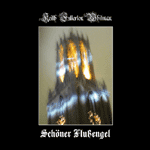 There's something new churning inside the supernatural bones of thesesongs. The world of instrumental evolution and ultra-processed sound isripe with abrasiveness and cosmic dust. While most of what KeithFullerton Whitman releases under his own name is numinous and hazy,there's an extra dose of the dark and unfathomable on Schöner Flußengel. Bits and pieces of Antithesisremain on this record; the album moves via the progression of obviousinstrumentation and recognizable musical elements. The record floats,however, in a way that its predecessor did not. Whitman's melodicmovements are seemingly circular and they build a labyrinthinestructure that lacks no amount of intimidation. "Lixus (VersionAnalogique)" opens the album with the ghastly moan of cymbalsscratching against each other, but the cymbals give way suddenly to aguitar melody that will be repeated later in the album. Lightpercussion highlights this oddly looped melody until strange soundsbegin to shine over it and place it within the context of something fargreater than itself. The guitar falls away into an abyss of heavy andsubtle percussive elements and whale-like echoes. Immediately followingthis thematic opening is a giant hole in the space-time continuum. It'sas though a massive star collapsed in on itself right in the middle ofthis record and left a record of its nature. The massive and meandering"Bewusstseinserweiternd Tonaufnahme (Einer & Zweiter Teile)" is aconfounding piece of recording. Like a mammoth and unmovable monumentdedicated to the ruinous gods of the ancient world, it towers over therest of Schöner Flußengel and establishes the tone that comesto dominate the record. At various points in this song I'm quite surethat it is the moan of devilish monks I'm hearing reverberate throughthe morbidly decorated architecture of an unholy church. The dark,all-consuming sound continues up and until "Lixus (Version Numerique)"and the closing "Weiter." The guitar theme from the opening trackreturns and is now complimented by a host of obscene sounds and starryshrieks. Distortion stumbles back and forth, bleating and honking inshort bursts and adding a fullness that was missing from "Lixus(Version Analogique)." Instead of fading into nothingness, however, thewave of guitar and alien gasps resolves itself into a stunning displayor synthetic orchestras and rhythmic, digital crashes. A piano ormodified organ sound (sometimes even sounding like a strange guitar)rotates through a series of patterns, both percussive and melodic innature, which creates a beautiful stream of artificial chamber music.Slowly the baroque style of the piece transforms into a seemingly liveperformance inside an imagined temple with its roof open to theterrifying vacancy above. The bizarre and grotesquely hypnoticqualities it harbors provide a mysterious aura around it that makesrepeated listens necessary and the record more enjoyable each timethrough. -
There's something new churning inside the supernatural bones of thesesongs. The world of instrumental evolution and ultra-processed sound isripe with abrasiveness and cosmic dust. While most of what KeithFullerton Whitman releases under his own name is numinous and hazy,there's an extra dose of the dark and unfathomable on Schöner Flußengel. Bits and pieces of Antithesisremain on this record; the album moves via the progression of obviousinstrumentation and recognizable musical elements. The record floats,however, in a way that its predecessor did not. Whitman's melodicmovements are seemingly circular and they build a labyrinthinestructure that lacks no amount of intimidation. "Lixus (VersionAnalogique)" opens the album with the ghastly moan of cymbalsscratching against each other, but the cymbals give way suddenly to aguitar melody that will be repeated later in the album. Lightpercussion highlights this oddly looped melody until strange soundsbegin to shine over it and place it within the context of something fargreater than itself. The guitar falls away into an abyss of heavy andsubtle percussive elements and whale-like echoes. Immediately followingthis thematic opening is a giant hole in the space-time continuum. It'sas though a massive star collapsed in on itself right in the middle ofthis record and left a record of its nature. The massive and meandering"Bewusstseinserweiternd Tonaufnahme (Einer & Zweiter Teile)" is aconfounding piece of recording. Like a mammoth and unmovable monumentdedicated to the ruinous gods of the ancient world, it towers over therest of Schöner Flußengel and establishes the tone that comesto dominate the record. At various points in this song I'm quite surethat it is the moan of devilish monks I'm hearing reverberate throughthe morbidly decorated architecture of an unholy church. The dark,all-consuming sound continues up and until "Lixus (Version Numerique)"and the closing "Weiter." The guitar theme from the opening trackreturns and is now complimented by a host of obscene sounds and starryshrieks. Distortion stumbles back and forth, bleating and honking inshort bursts and adding a fullness that was missing from "Lixus(Version Analogique)." Instead of fading into nothingness, however, thewave of guitar and alien gasps resolves itself into a stunning displayor synthetic orchestras and rhythmic, digital crashes. A piano ormodified organ sound (sometimes even sounding like a strange guitar)rotates through a series of patterns, both percussive and melodic innature, which creates a beautiful stream of artificial chamber music.Slowly the baroque style of the piece transforms into a seemingly liveperformance inside an imagined temple with its roof open to theterrifying vacancy above. The bizarre and grotesquely hypnoticqualities it harbors provide a mysterious aura around it that makesrepeated listens necessary and the record more enjoyable each timethrough. - 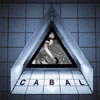 Though Chris Carter and Cosey Fanni Tutti have released a cartload ofalbums since 1981 under their familiar Chris & Cosey banner, Cabalis actually the debut album under their new guise of Carter Tutti. Thissudden switch from their sweetly alliterative Christian names to theirdecidedly more turgid surnames also signals a slight change of musicalstrategy. The music on Cabal is more abstract than past efforts, which were largely beat-driven and contained definite songs. Cabalis still very much recognizable as being the work of Chris and Cosey,with its deep technoid beat constructions and the breathy sexuality ofCosey's vocals, but there is a growing de-emphasis on song structure,and a clear move towards more amorphous and ambient soundscapes.Appropriate to its title, the album seems to exist in a nebuloussubterranean chamber, the musicians swimming lithe and eel-like in somekind of amniotic fluid, sending electrical pulses back and forth inwordless communication. I was immediately reminded of other aquaticallyfixated techno, such as that of the now-defunct Drexciya, or some ofThe Orb's more cohesive efforts. But Carter Tutti's brand of techno isdeep and druggy, shivering and sexual, finding its shape along thesurfaces of the female body. The musicians seem to be equating thesecret intrigue of the title with the labial folds or the dark recessesof the vagina, rising and falling with the rhythms of sexual congress.Dreamlike reverberations are sent careening into the deep echo chamberof each dubby bass rumble. Each track seems to melt into the next,forming one long continuous shape, kept in constant motion byrelentless snaking beat constructions. Each track is thoroughlydrenched in this muted, soft-edged aquatic atmosphere, the occasionalblasts of horn blowing bubbles in the murky depths. Much of the albumis suitably hypnotic, and the nebulous, undefined quality of many ofthe tracks helps to create this trancelike atmosphere. As the albumprogresses towards its conclusion, the tracks become ever more deeper,the frequencies lowering, providing a true test of a sound system'sability to handle rumbling, subterranean bass. The production istop-notch throughout, with each element crisply rendered and coastingacross the stereo channels, providing an immersive psychedelicenvironment that never failed to be complete engaging, sinking intolower and lower depths of hidden underwater chambers. My favoritemoment came on "Passing," when the sudden sad intonations of a droningharmonica provided an indescribably beautiful counterpoint to theheaving bass rumbles and Cosey's manipulated vocal cooing. Cabal is quite possibly the sexiest album I've heard all year.
Though Chris Carter and Cosey Fanni Tutti have released a cartload ofalbums since 1981 under their familiar Chris & Cosey banner, Cabalis actually the debut album under their new guise of Carter Tutti. Thissudden switch from their sweetly alliterative Christian names to theirdecidedly more turgid surnames also signals a slight change of musicalstrategy. The music on Cabal is more abstract than past efforts, which were largely beat-driven and contained definite songs. Cabalis still very much recognizable as being the work of Chris and Cosey,with its deep technoid beat constructions and the breathy sexuality ofCosey's vocals, but there is a growing de-emphasis on song structure,and a clear move towards more amorphous and ambient soundscapes.Appropriate to its title, the album seems to exist in a nebuloussubterranean chamber, the musicians swimming lithe and eel-like in somekind of amniotic fluid, sending electrical pulses back and forth inwordless communication. I was immediately reminded of other aquaticallyfixated techno, such as that of the now-defunct Drexciya, or some ofThe Orb's more cohesive efforts. But Carter Tutti's brand of techno isdeep and druggy, shivering and sexual, finding its shape along thesurfaces of the female body. The musicians seem to be equating thesecret intrigue of the title with the labial folds or the dark recessesof the vagina, rising and falling with the rhythms of sexual congress.Dreamlike reverberations are sent careening into the deep echo chamberof each dubby bass rumble. Each track seems to melt into the next,forming one long continuous shape, kept in constant motion byrelentless snaking beat constructions. Each track is thoroughlydrenched in this muted, soft-edged aquatic atmosphere, the occasionalblasts of horn blowing bubbles in the murky depths. Much of the albumis suitably hypnotic, and the nebulous, undefined quality of many ofthe tracks helps to create this trancelike atmosphere. As the albumprogresses towards its conclusion, the tracks become ever more deeper,the frequencies lowering, providing a true test of a sound system'sability to handle rumbling, subterranean bass. The production istop-notch throughout, with each element crisply rendered and coastingacross the stereo channels, providing an immersive psychedelicenvironment that never failed to be complete engaging, sinking intolower and lower depths of hidden underwater chambers. My favoritemoment came on "Passing," when the sudden sad intonations of a droningharmonica provided an indescribably beautiful counterpoint to theheaving bass rumbles and Cosey's manipulated vocal cooing. Cabal is quite possibly the sexiest album I've heard all year. 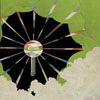 For this band to adopt the name Landing seems like a dash of irony.There is nothing grounded about this band, nothing the least bitindicative that they are or are about to touch the Earth and accept therules and mechanics that govern it. Their sound is one of the sublime,the surreal, more akin to the forces that invisibly hold things aloftand floating than the submission to gravity. "Fluency of Colors"initiates the album's upward motion, each note slipping over anotherand flickering darkly like a dying bulb burning after images intomemory. The music envelops, and what at first seems so delicate andvaporous begins to obscure everything else. Sphereis an album of meditation, of contemplative thought, using thehypnotic, patient bloom of the band's music to instigate a sense ofcalm and focus. Along the course of the album, there are threeinstrumental interludes, each titled "Gravitational." These interludesare the moment of greatest upheaval and dissonance on the album, pointswhere the urge to escape the pull results in stress and tension. Thethree pieces gradually build from the chilly wind-scape of the first tothe creaking buzz of the third. These pieces serve as weights orcounterpoints to the soaring jags the compromise the proper songs."Solstice" shimmers brightly while a stinging updraft of guitar searsthrough the temperate atmosphere. The intensity of the guitar's ascentis almost jarring in contrast to the lightness of the back drop,however the contrast heightens the perception of each elementindividually until ultimately they coalesce together perfectly. Thevery titles of the songs hint at a connection with perception,connection with the sights, sounds, and smells of the world around you.This thread of connection stretches itself between each song and bindstogether the album's experience, linking it to a greater application ofsense and feeling. Sphere would make an excellent album for sinking into thought, escaping the white noise of the mind.
For this band to adopt the name Landing seems like a dash of irony.There is nothing grounded about this band, nothing the least bitindicative that they are or are about to touch the Earth and accept therules and mechanics that govern it. Their sound is one of the sublime,the surreal, more akin to the forces that invisibly hold things aloftand floating than the submission to gravity. "Fluency of Colors"initiates the album's upward motion, each note slipping over anotherand flickering darkly like a dying bulb burning after images intomemory. The music envelops, and what at first seems so delicate andvaporous begins to obscure everything else. Sphereis an album of meditation, of contemplative thought, using thehypnotic, patient bloom of the band's music to instigate a sense ofcalm and focus. Along the course of the album, there are threeinstrumental interludes, each titled "Gravitational." These interludesare the moment of greatest upheaval and dissonance on the album, pointswhere the urge to escape the pull results in stress and tension. Thethree pieces gradually build from the chilly wind-scape of the first tothe creaking buzz of the third. These pieces serve as weights orcounterpoints to the soaring jags the compromise the proper songs."Solstice" shimmers brightly while a stinging updraft of guitar searsthrough the temperate atmosphere. The intensity of the guitar's ascentis almost jarring in contrast to the lightness of the back drop,however the contrast heightens the perception of each elementindividually until ultimately they coalesce together perfectly. Thevery titles of the songs hint at a connection with perception,connection with the sights, sounds, and smells of the world around you.This thread of connection stretches itself between each song and bindstogether the album's experience, linking it to a greater application ofsense and feeling. Sphere would make an excellent album for sinking into thought, escaping the white noise of the mind. 
